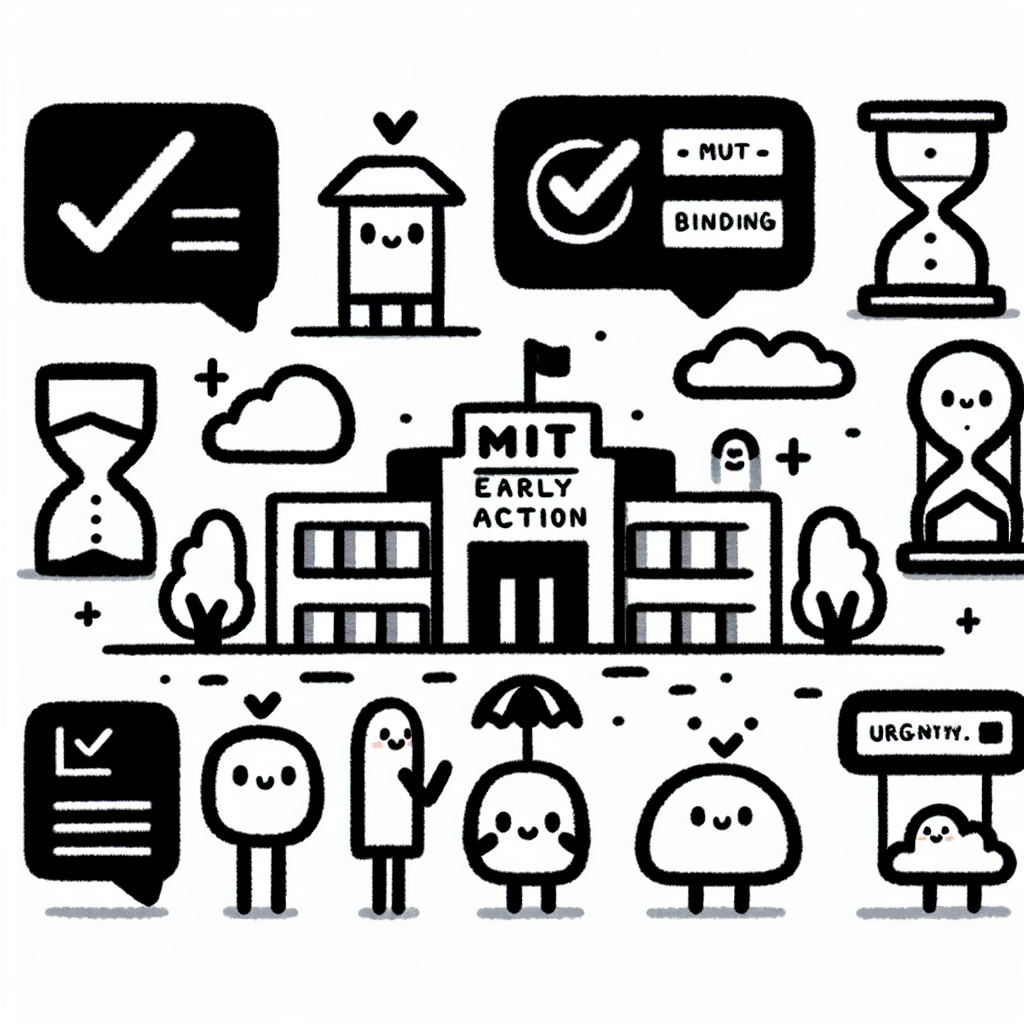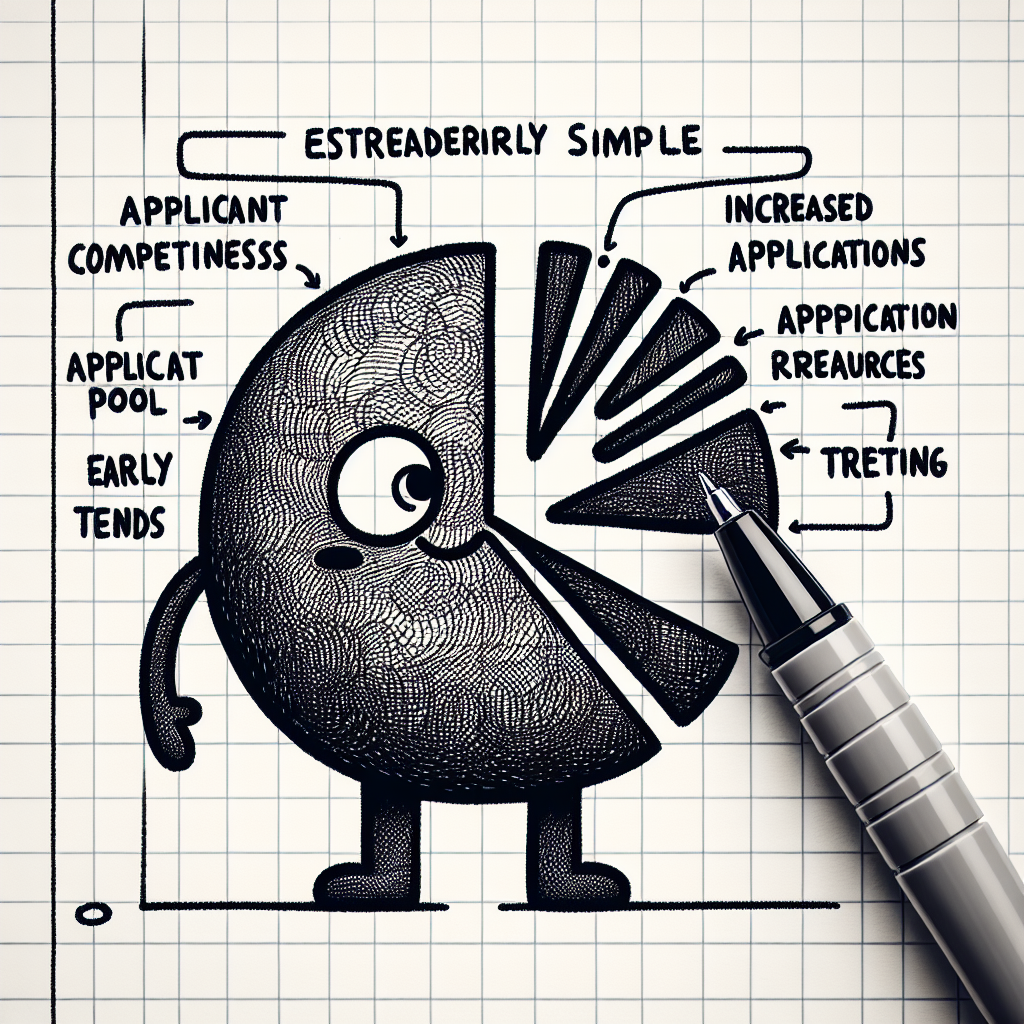Introduction
MIT's Early Action (EA) program is a non-binding admission route that allows high school seniors to apply by early November and receive their decision in mid-December. Unlike binding early decision programs, EA gives students the flexibility to consider other offers before making a final college choice.
As one of the most competitive universities in the world, the Massachusetts Institute of Technology attracts thousands of talented applicants each year. The MIT early action acceptance rate is often used as a benchmark by students and families to gauge their chances of admission and assess how selective the process truly is.
This article examines the year-by-year trends in MIT’s EA acceptance rates, places them in the context of the school’s overall admissions strategy, and provides insights into what prospective students can learn from these patterns.

What is MIT Early Action?
MIT Early Action is a non-binding early application option that allows students to submit their applications by early November and receive an admissions decision by mid-December. Unlike Early Decision programs offered by some other institutions, MIT's Early Action does not require students to commit to attending if admitted.
Students who apply through MIT Early Action may still apply to other colleges and universities under their Regular Decision plans. However, they are not permitted to apply to other schools' Early Action or Early Decision programs if those programs are considered "restricted" or "single-choice."
Benefits of Early Action
One of the key benefits of applying through MIT Early Action is that it enables students to express a strong, proactive interest in attending MIT. While the process is non-binding, applying early can signal that the applicant is highly motivated and organized.
Receiving an early admissions decision also gives students valuable feedback. If admitted, they can begin making preparations for college sooner. If deferred, they still have the opportunity to strengthen their application for the Regular Decision round. Finally, being admitted early provides more time to plan financially and academically for the transition to college.
Understanding the MIT Early Action process is crucial for students aiming to increase their chances within the competitive landscape reflected by the MIT early action acceptance rate.

MIT Early Action Acceptance Rates by Year
MIT's early action acceptance rate has fluctuated over the years, reflecting changes in application volume and institutional priorities. Below is a year-by-year breakdown:
Class of 2025
- Applications Received: 15,036
- Students Admitted: 719
- Acceptance Rate: 4.8%
- Source
Class of 2026
- Applications Received: 14,781
- Students Admitted: 697
- Acceptance Rate: 4.7%
- Source
Class of 2027
- Applications Received: 11,924
- Students Admitted: 685
- Acceptance Rate: 5.7%
- Source
Class of 2028
- Applications Received: 12,563
- Students Admitted: 661
- Acceptance Rate: 5.3%
- Source
Class of 2029
- Applications Received: 12,053
- Students Admitted: 721
- Acceptance Rate: 6.0%
- Source
These figures show that while the number of early action applicants to MIT has varied, the mit early action acceptance rate has remained consistently low, highlighting the competitive nature of the process.

Trend Analysis: What the Numbers Reveal
Declining Application Volume
The MIT Early Action acceptance rate has been influenced by a noticeable decrease in application volume over recent admission cycles. The peak occurred with the Class of 2025, which saw a record 15,036 applicants. Since then, the number of Early Action applications has declined moderately in each subsequent year. This reduction may reflect changing applicant behavior or broader shifts in the college admissions landscape.
Slight Increase in Acceptance Rates
Despite fewer applicants, the MIT Early Action acceptance rate has seen a slight upward trend. For the Class of 2026, the acceptance rate stood at 4.7%, but by the Class of 2029, it had risen to 6.0%. This marginal increase suggests that MIT may be adjusting its Early Action yield strategy or that the strength of the applicant pool has led to more confident offers of admission.
Year-over-Year Variability
Although the MIT Early Action acceptance rate has shown some year-over-year variation, it remains consistently low. This consistency underscores MIT's ongoing selectivity and the competitive nature of its admissions process, regardless of minor fluctuations in the number of applicants or admitted students.

Factors Influencing Early Action Acceptance Rates
Institutional Strategy
MIT's early action acceptance rate can be affected by strategic decisions made to manage enrollment. The admissions office may adjust how many students are accepted early based on predictions of how many of those students will ultimately enroll (known as yield). If MIT anticipates a high yield, it may reduce the number of early action offers to maintain a balanced incoming class size.
Applicant Pool Composition
The quality and size of the applicant pool also influence the early action acceptance rate. In recent years, increased access to online educational resources, coding bootcamps, and STEM outreach initiatives has led to a more prepared and competitive applicant pool. As more highly qualified students apply, MIT may become more selective, lowering the early action acceptance rate despite overall applicant strength.
Standardized Testing Policies
Changes in standardized testing policies, particularly during the COVID-19 pandemic, also play a role. When MIT adopted a test-optional policy temporarily, it may have encouraged a broader and more varied group of students to apply. This increase in applications can make the early action process more competitive, impacting the acceptance rate.
Broader Admissions Landscape
National trends in college admissions also influence MIT's early action acceptance rate. As more students apply early to multiple institutions in hopes of securing a spot sooner, schools like MIT may see a surge in early applications. This rise in demand can lead to a lower acceptance rate, even if the number of admitted students stays constant.

Comparing Early Action to Regular Decision at MIT
Key Differences
The Massachusetts Institute of Technology (MIT) offers a non-binding Early Action (EA) option for applicants, allowing students to apply by an earlier deadline without the obligation to attend if admitted. In contrast, Regular Decision (RD) involves a later deadline and includes a larger, more diverse applicant pool.
One notable difference between the two timelines is the acceptance rate. Historically, the MIT Early Action acceptance rate has been slightly higher than that of Regular Decision. This trend may be due to the nature of the EA applicant pool, which often includes more prepared and highly qualified candidates who are ready to submit strong applications early in the admissions cycle.
Strategic Considerations for Applicants
Students who are confident in their academic record and extracurricular achievements by the early deadline may benefit from applying through MIT’s Early Action. These applicants often have a clear academic focus and strong standardized test scores by November, aligning well with the expectations for early evaluation.
On the other hand, students who believe they need additional time to enhance their academic profile, improve test scores, or develop their extracurricular involvement may find Regular Decision a better fit. The additional months before the RD deadline can provide a valuable opportunity to strengthen their application.
Ultimately, deciding between EA and RD at MIT involves assessing readiness and determining which timeline allows for the most compelling application. While the MIT Early Action acceptance rate may offer a slight statistical edge, the quality and timing of the application remain critical factors.

Implications for Applicants
What These Numbers Mean
The MIT early action acceptance rate, which hovers around 6%, highlights the institution's intense selectivity even during the non-binding early admissions cycle. This low rate underscores the importance of a well-prepared application. Applicants should understand that gaining admission through early action is not easier simply because it happens earlier in the cycle. Instead, it reflects MIT’s holistic evaluation process that emphasizes more than just high test scores and GPAs.
To stand out in such a competitive pool, applicants need to demonstrate authenticity and a clear alignment with MIT’s mission. The admissions committee seeks students who embody the institute’s values—intellectual curiosity, commitment to innovation, and a collaborative spirit. A strong academic profile is necessary, but not sufficient on its own. Applicants must also convey how they think, solve problems, and contribute to communities.
Tips for Early Action Applicants
Applying early should be a strategic decision. Candidates should only submit under early action if their application is fully polished by the November deadline. Rushed or incomplete submissions are unlikely to compete effectively in such a selective round.
Students should focus on presenting a narrative that reflects MIT’s core values. This includes showcasing problem-solving abilities, innovative thinking, and experiences of working effectively in teams. Whether through essays, recommendation letters, or extracurriculars, applicants should illustrate how they embody the qualities MIT looks for.
Finally, early action should not be used solely as a way to get ahead. Instead, it should be treated as a strategic opportunity to present a compelling, authentic application that aligns with what MIT seeks in its students. Understanding the competitive nature of the MIT early action acceptance rate can help applicants approach the process with greater clarity and intention.

Conclusion
Key Takeaways
MIT’s Early Action (EA) acceptance rate continues to reflect the institution’s global prestige and selective nature. Historically, the EA acceptance rate has remained low, underscoring the intense competition among high-achieving students worldwide. In recent years, while there have been slight fluctuations, these small increases do not significantly ease the level of competition.
Understanding the trends in the MIT Early Action acceptance rate is essential for applicants aiming to form a strategic application plan. Awareness of acceptance rate patterns allows students to realistically assess their chances and align their efforts accordingly.
Final Thoughts
While statistics like the MIT Early Action acceptance rate provide context, they are only part of the admissions equation. What ultimately matters most is the strength and authenticity of the application. A compelling personal narrative, academic excellence, and alignment with MIT’s values all play a crucial role in the admissions decision. Applicants should focus on crafting thoughtful, genuine applications rather than fixating solely on the numbers.

Additional Resources
For readers seeking more detailed data on the MIT Early Action acceptance rate across different years, the following resources provide official and third-party statistics:
- MIT Admissions Statistics for the Class of 2028: This source offers official data from MIT's admissions office, including acceptance rates, applicant pool size, and demographic breakdowns.
- MIT Admissions Statistics for the Class of 2029: Published by The Tech, MIT's student newspaper, this article includes the latest information on Early Action results for the Class of 2029.
- MIT Admissions Statistics for the Class of 2025: A detailed report from The Tech on the Early Action cycle for the Class of 2025, including acceptance data and trends.
- MIT Admissions Statistics for the Class of 2026: AdmissionsSight provides insights into the Early Action acceptance rate along with advice for applicants based on past cycles.
- MIT Admissions Statistics for the Class of 2027: This source offers additional context and analysis of acceptance trends for the Class of 2027 under MIT’s Early Action program.
These references can help prospective applicants understand how the MIT Early Action acceptance rate has evolved over time and what factors may influence admissions outcomes.














